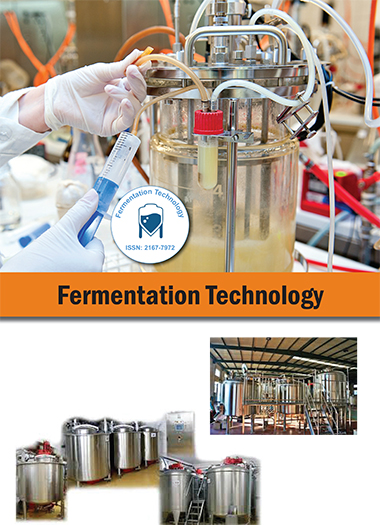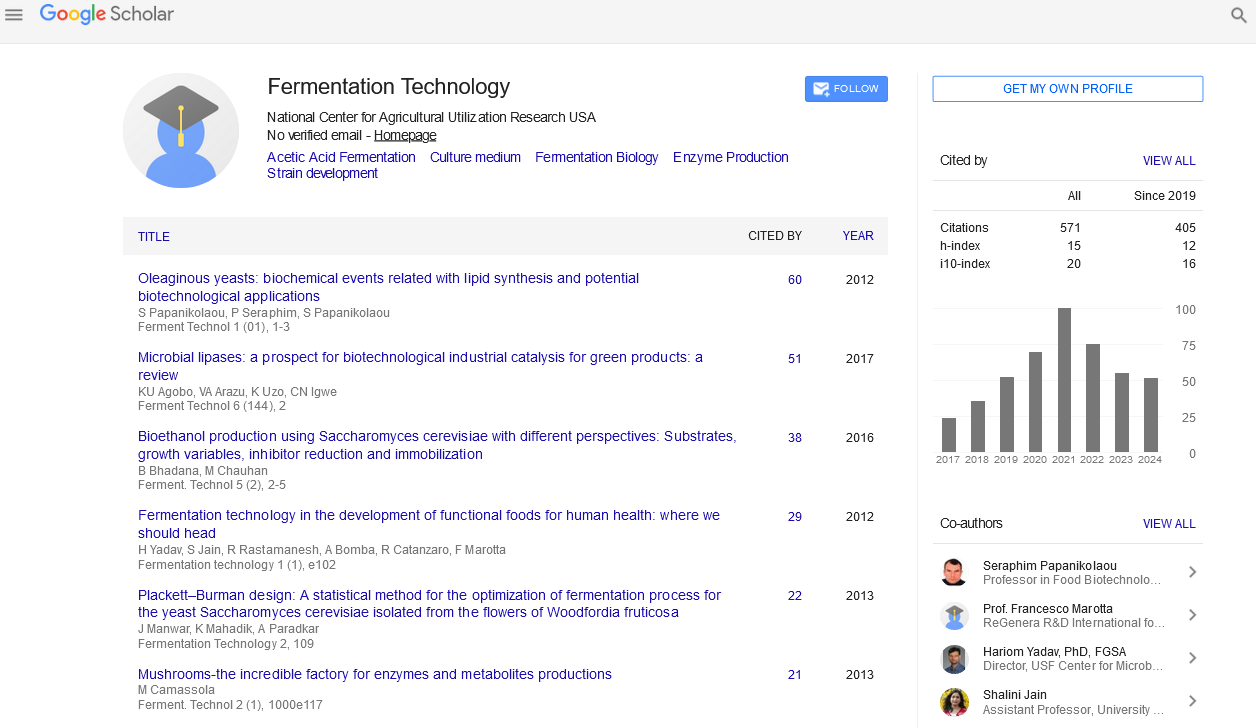Indexed In
- Open J Gate
- Genamics JournalSeek
- Access to Global Online Research in Agriculture (AGORA)
- RefSeek
- Hamdard University
- EBSCO A-Z
- OCLC- WorldCat
- Publons
Useful Links
Share This Page
Journal Flyer

Open Access Journals
- Agri and Aquaculture
- Biochemistry
- Bioinformatics & Systems Biology
- Business & Management
- Chemistry
- Clinical Sciences
- Engineering
- Food & Nutrition
- General Science
- Genetics & Molecular Biology
- Immunology & Microbiology
- Medical Sciences
- Neuroscience & Psychology
- Nursing & Health Care
- Pharmaceutical Sciences
Abstract
Production of β-(1,3)-glucanases by Trichoderma harzianum Rifai: Optimization and Application to Produce Gluco-oligosaccharides from Paramylon and Pustulan
Ellen C. Giese, Robert F. H. Dekker, Aneli M. Barbosa, Maria de Lourdes Corradi da Silva and Roberto da Silva
β-(1→3)-Glucanases were produced by Trichoderma harzianum Rifai PAMB-86 cultivated on botryosphaeran in a bench-fermenter and optimised by the response surface method. Maximal enzyme titres occurred at 5 days, initial pH 5.5 and aeration of 1.5vvm. β-(1→3)-The β-glucanolytic enzyme complex produced by T. harzianum Rifai PAMB- 86 was fractionated by gel filtration into 2 fractions (F-I, F-II), and employed to produce gluco-oligosaccharides from algal paramylon ((1→3)-β-D-glucan) and lichen pustulan ((1→6)-β-D-glucan). Both enzymes attacked paramylon to the extent of ~15-20% in 30 min releasing glucose and laminaribiose as major end-products, and laminari- oligosaccharides of degree of polymerization (DP) ≥ 3. Only F-I degraded pustulan resulting in ~2% degradation at 30 min, with glucose, gentiobiose and gentio-oligosaccharides of DP ≥ 4 as major products. The difference in the nature of the hydrolysis products can be explained by the substrate specificities of each enzyme fraction, and the structural differences of the β-D-glucans attacked.

